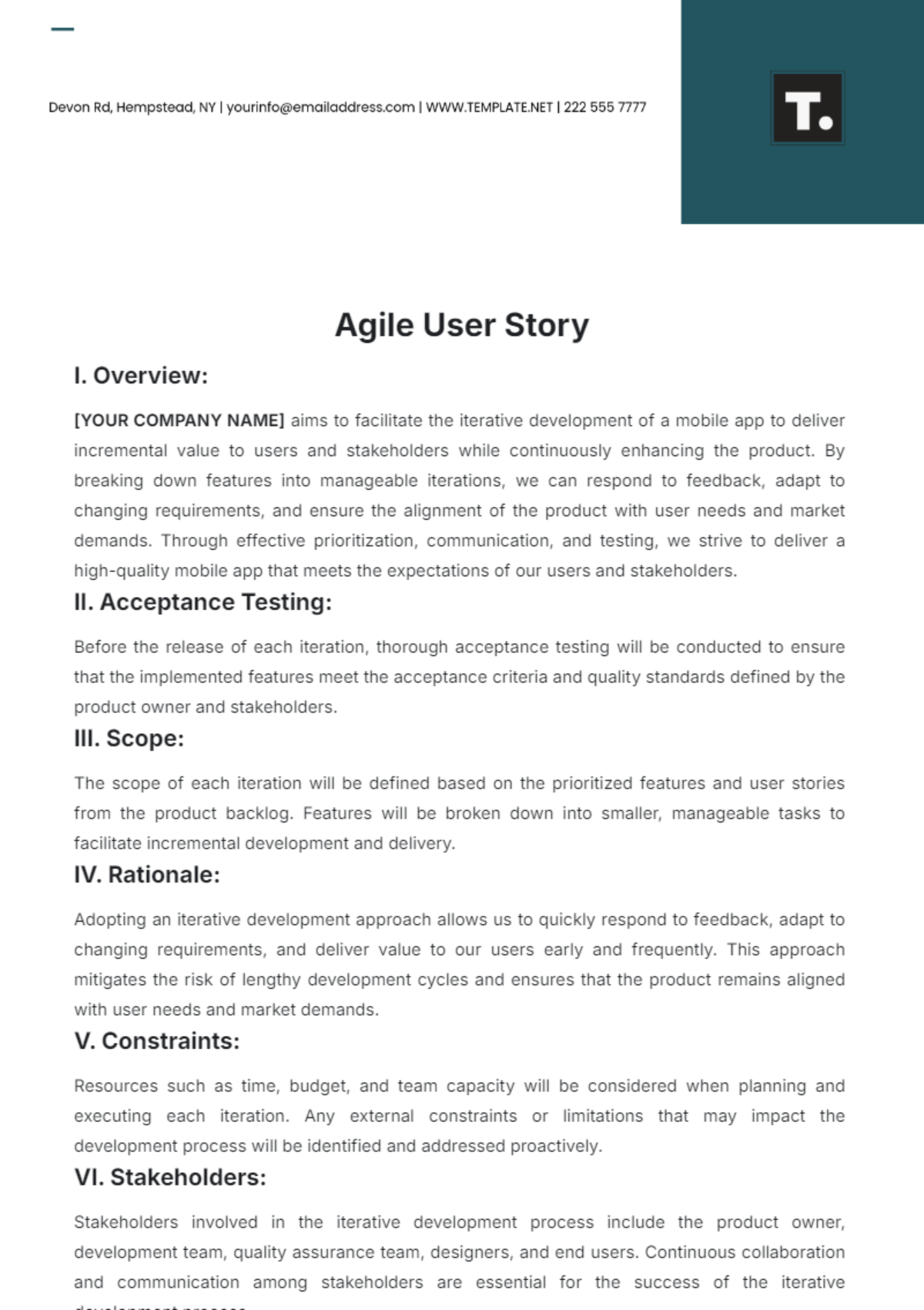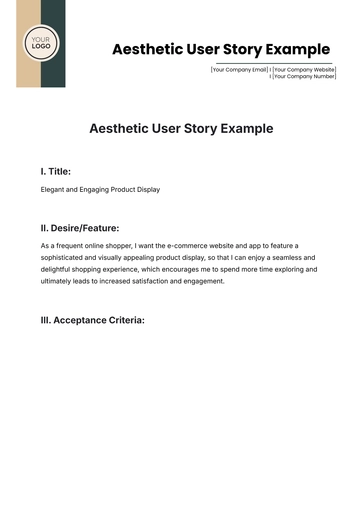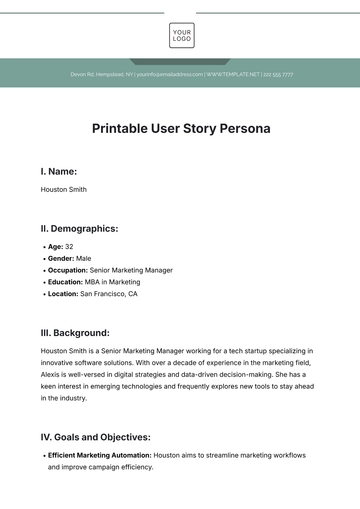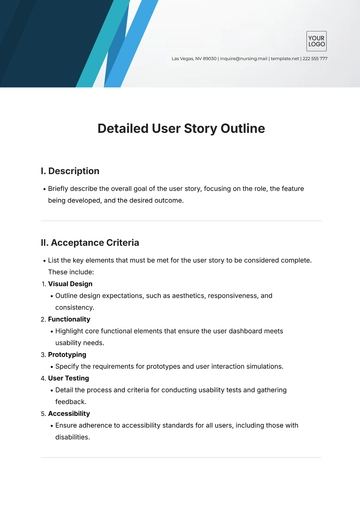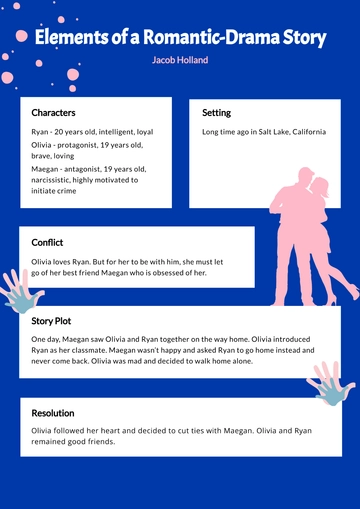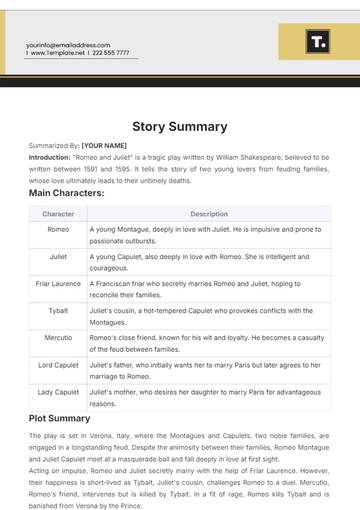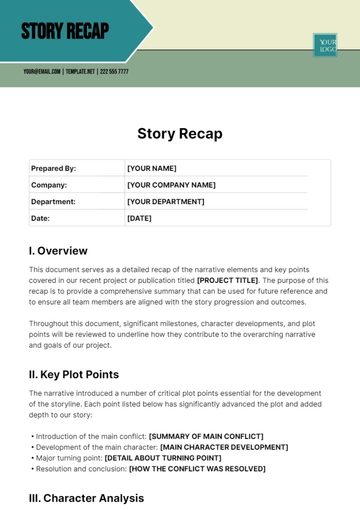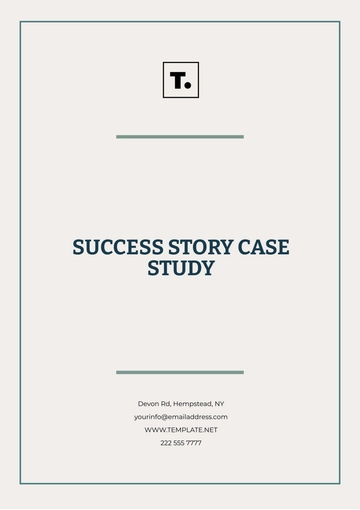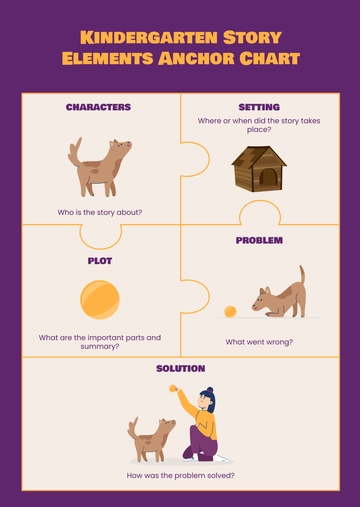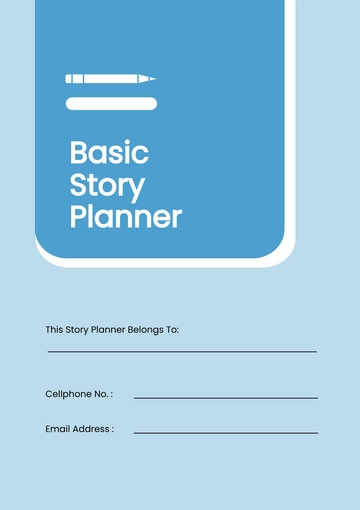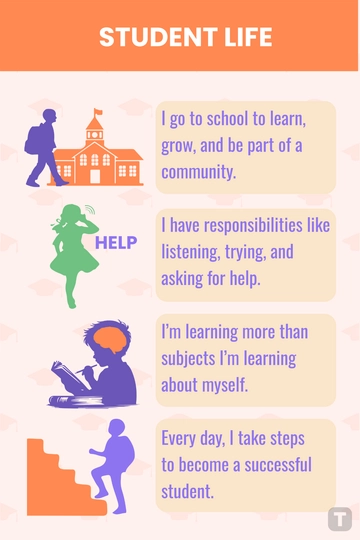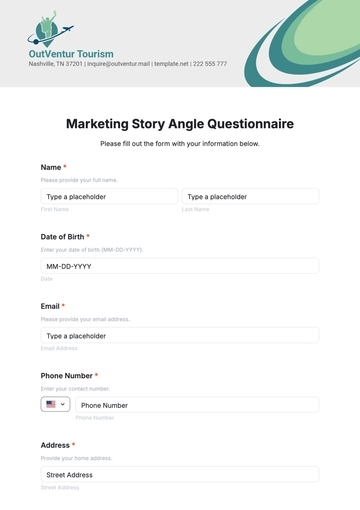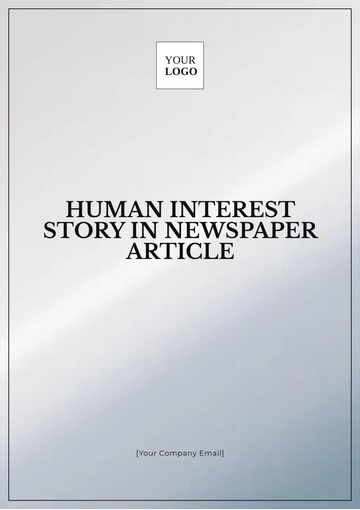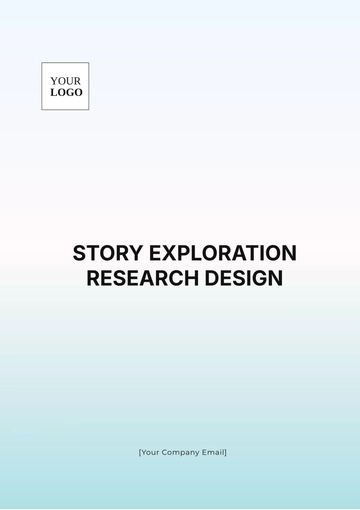Agile User Story
User Story: Iterative Mobile App Development for Continuous Value Delivery
User Story Details
Objectives
Deliver continuous value to users through iterative releases.
Incorporate user and stakeholder feedback into each development cycle.
Enhance app features based on performance metrics and user data.
Roles and Responsibilities
Role | Responsibilities |
|---|
Product Owner | Define the product vision and prioritize features based on user feedback. |
Development Team | Implement features and fixes in iterative cycles, ensuring quality delivery. |
UX/UI Designer | Design user-centered interfaces, focusing on usability and visual appeal. |
QA Tester | Perform testing to ensure each iteration meets quality standards. |
Iteration Process
The development process is divided into multiple iterations, each designed to deliver a working version of the app with new features or enhancements. Each iteration involves:
Planning: Set goals and define features for the iteration.
Development: Implement the features and conduct initial tests.
Review: Evaluate the completed work with stakeholders, gathering feedback.
Refinement: Make necessary adjustments and prepare for the next iteration.
Expected Outcomes
For Users
Receive timely updates with enhanced features and functionalities.
Experience improved app stability and performance over time.
Benefit from a product that adapts to their evolving needs.
For Stakeholders
Gain regular insights into the product's direction and progress.
Participate actively in shaping the product's roadmap.
Maximize return on investment through a strategically developed app.
Conclusion
This user story showcases a strategic approach to mobile app development, harnessing the power of iterative cycles to continuously improve and provide value. By engaging both users and stakeholders throughout the process, the mobile app evolves to meet expectations, ensuring ongoing satisfaction and success.
